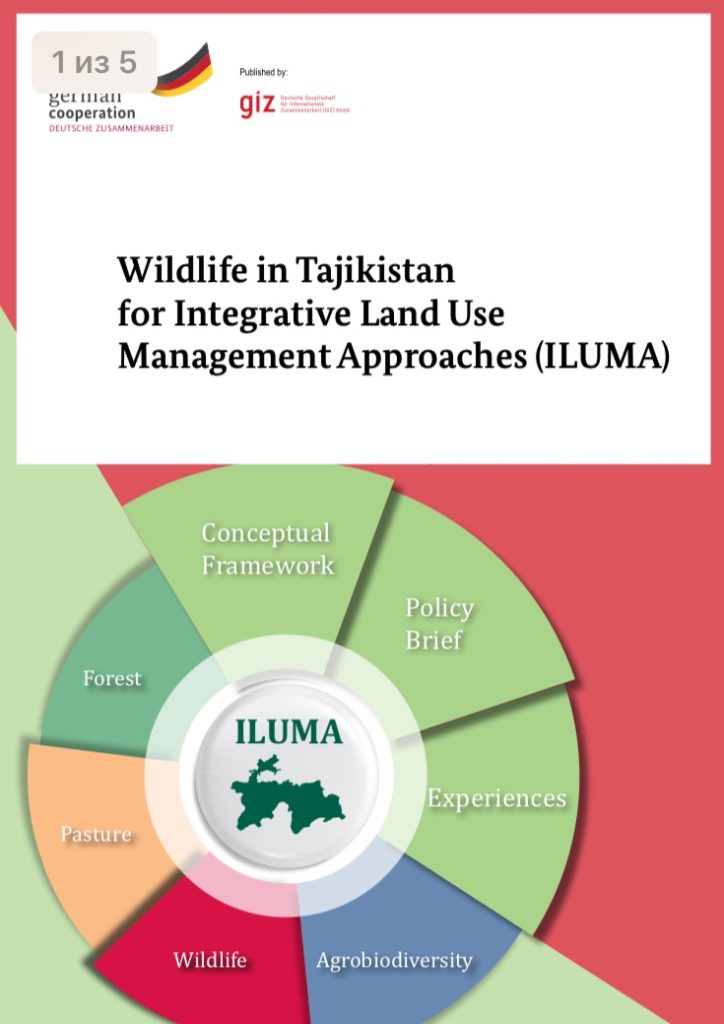1. What is this land use practice about?
About 90 percent of the territory of Tajikistan is mountainous and almost 25 percent of the country has the status of a protected area. The diverse and rare wildlife species of the mountainous region are its most valuable resources as well as an integral part of the mountainous ecosystem. All wildlife is owned and managed by the state. However, due to budgetary constraints, funding of the protected areas and implementation of wildlife protection laws are rather weak. Wild animals, particularly wild sheep (argali Ovis ammon and urial Ovis vignei) and wild goats (ibex Capra sibirica and markhor Capra falconeri heptneri) are hunted for subsistence, commerce and sport. The international hunting of mountain ungulates provides significant revenues for the state budget. At the local level, the population of the remote and mountainous areas rely upon subsistence farming, such as livestock keeping, for sustaining their livelihoods. The wildlife is a source of food and income for household; in certain areas, it is the only option to survive.
Since independence and the subsequent Civil War in 1992-1997, poaching has been widespread. A key driver of the phenomenon has been a high level of food insecurity coupled with the wide availability of fire arms. Fossil fuel and electricity shortages have also forced people to cut trees and shrubs for fuelwood. Such uncontrolled logging has had a negative impact on the wildlife habitat.
Unemployment and limited sources of alternative income has made hunting a profitable revenue source, covering not only daily costs of living and providing food, but also covering costs for important family events such as weddings. Illegal and unsustainable hunting has led to a drastic reduction of wildlife populations in numbers and distribution areas. Nevertheless, prohibiting the local population from hunting the wild animals around them has not proven to be the right solution to combating poaching – on the contrary, it has distanced them from legal activities even further.
2. Cornerstones of the wildlife management
Sustainably-managed wildlife resources with the participation of direct users, i.e. local communities, and close cooperation with state authorities and the scientific community is one of the ‘cornerstones’ of wildlife management. This approach can establish a management model that ensures the conservation of wild animals and their sustainable use. The Community Based Wildlife Management approach (CBWM) piloted and implemented by GIZ in Tajikistan during 2008-2014 was based upon the principles of sustainable wildlife management and has been among our more successful land use experiences. Two important success factors of CBWM are long terms rights for the concessions as well as the protentional to bring the communities a minimum economic benefit to sustain their livelihoods. Sustainable wildlife management can be a source of money to pay for people’s basic needs, invest in wildlife conservation measures and contribute to the enhancement of local infrastructure. Hunting of wildlife is allowed through issuing of permits exclusively in an assigned area, and only by the organisation that manages the area. The added value of the CBWM approach is the capacity development on technical and management skills for the responsible governmental institutions and the local user groups. Support is also provided to update the relevant legal framework based upon the lessons learnt from testing the management models and identifying the challenges to be tackled and opportunities to harness. This will ensure political support, better decision-making and long-term sustainability of the measures for wildlife conservation and sustainable management.
